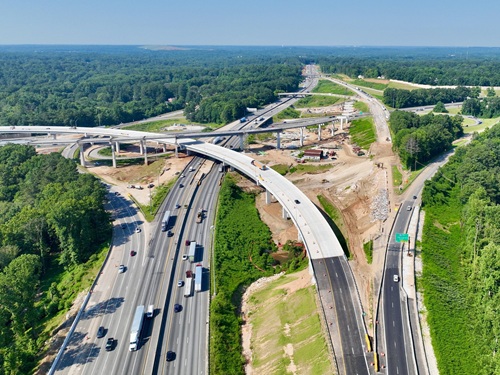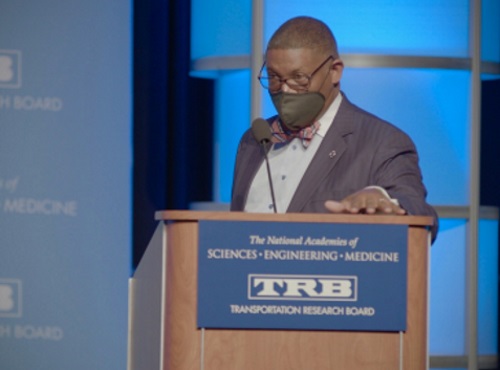Dr. Shawn Wilson (seen above) – secretary of the Louisiana Department of Transportation and Development – headlined a roundtable discussion at the Transportation Research Board’s 2022 annual meeting on January 11 in Washington D.C. entitled “State DOTs: Creating Pathways to Equity.”
[Above photo by AASHTO]
Wilson has made equity one of his key emphasis areas during his yearlong tenure as 2021-2022 president of the American Association of State Highway and Transportation Officials.

He noted during his opening remarks that in the 107-year history of AASHTO, there has only been one African American president “and it happens to be me.” However, he noted that the demographics of state department of transportation leadership – indeed, for the transportation industry as a whole – is undergoing significant and rapid change.
“When I became Louisiana’s transportation secretary in 2016, I was the only African-American state DOT secretary,” he said. “Now we have the most diverse group of [state DOT] CEOs in terms of gender, race, and background than at any time in AASHTO’s history.”
Wilson said one of his overriding goals is to create a “sustainable structure” for equity that “others can follow” in the transportation industry.
“We need to talk about creating a ‘new normal’ – about having quality in the workplace alongside putting leadership of DEI [diversity, equity, and inclusion] principles in place to address future infrastructure needs,” he said.

Yet Vince Williams – the mayor of Union City, Georgia, and president of the National League of Cities – noted during the panel that, “here we are in 2022 and we are having this conversation concerning equity and inclusion around something as basic as transportation and quality of life issues.”
He stressed that to make a true “leap forward” where equity and inclusion is concerned “will take all of you to join in. It is going to take real intentional movement from professionals that have federal and state dollars to come into these underserved communities. It is time to start doing the work and doing that work together.”
Toks Omishakin – director of the California Department of Transportation – echoed Williams in that for state DOTs to be successful at this equity work, they must shift their focus from “symbolic issues” to “systemic issues.”

He explained that state DOTs “need to truly ingrain equity into our organizations and communities – and the way to do this is by having true engagement with communities.”
Omishakin said that means going out, listening, and engaging directly with communities – local non-profits, city councils, citizen groups, among others – in their communities. “We can’t tell people to come to us,” he stressed. “We have to go to them and engage people directly. This is the approach we must use.”
Yassmin Gramian, secretary of the Pennsylvania Department of Transportation, noted that after a nearly 30-year career in the transportation field, her agency is now looking at projects in terms of equity. “I am thrilled to see us pivoting and leveraging our position as state DOT to now do that,” she said.
“People who are in most need of transportation need a voice – they need space and time to advocate for themselves,” Gramian added. “Systemic change must start at the planning or with the programs. Do we truly understand the urban/rural challenges involved? If we have not lived that life, it is difficult to understand the challenges – that’s why we need to bring in people from those backgrounds into the transportation planning process. They rely on public officials to come to agencies like ours to say, ‘this what we need.’”
 Top Stories
Top Stories
How Rising Construction Costs Could Impact Reauthorization
November 14, 2025 Top Stories
Top Stories

